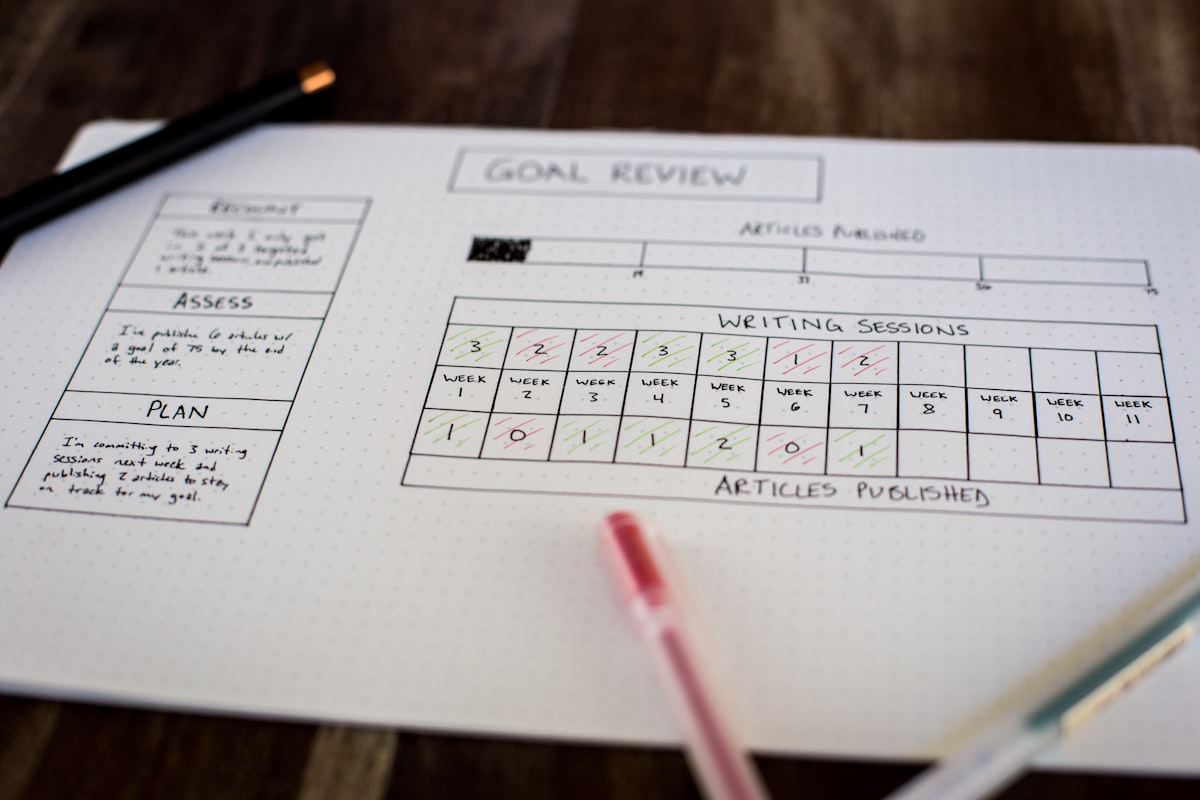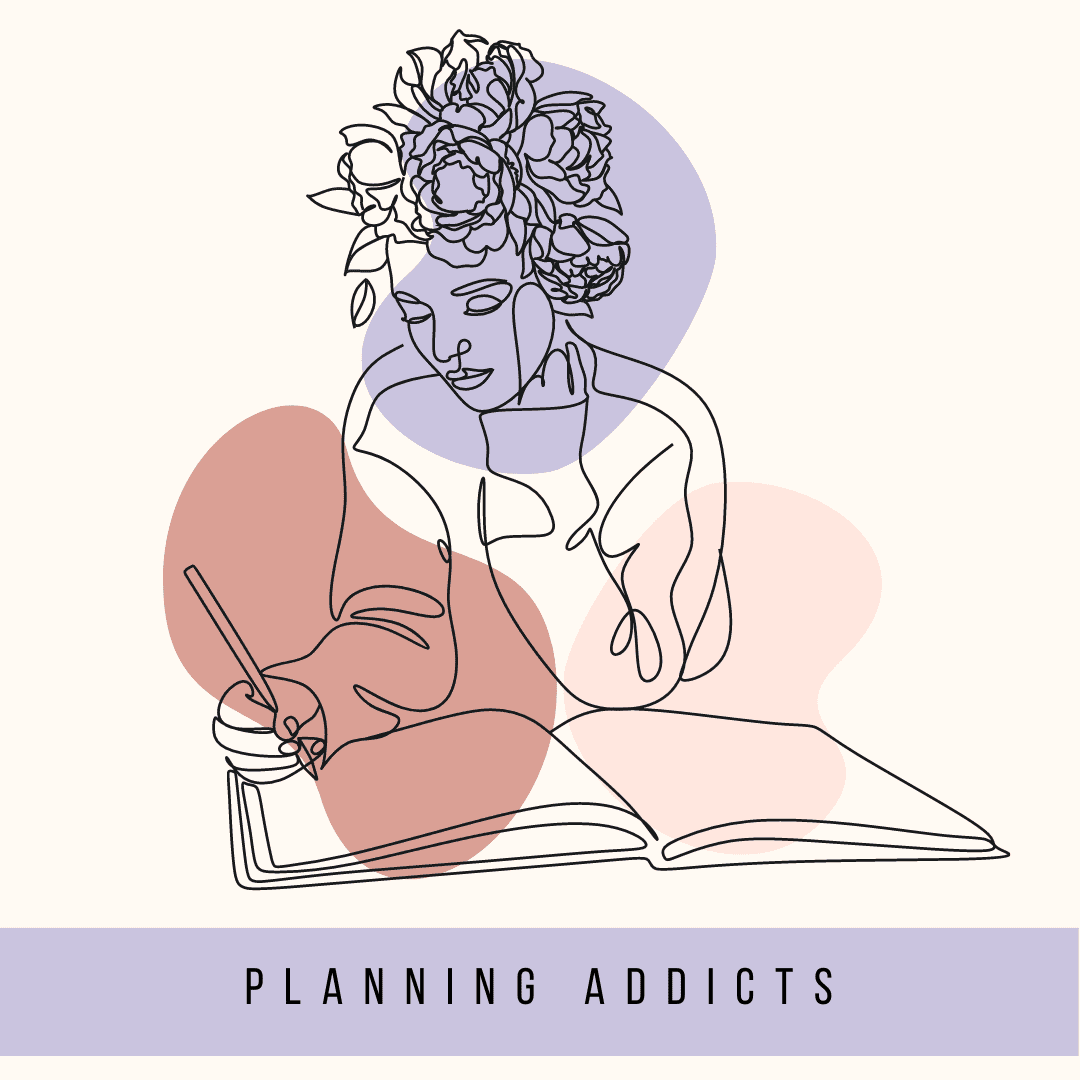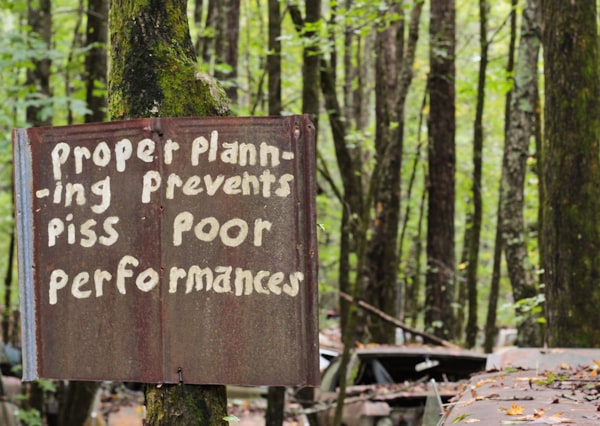Resolutions, Routines, and How Planning Can Help

Every January, people all around the world set New Year's resolutions with the best of intentions. These resolutions often include promises to get fit, save money, learn new skills, or make significant life changes. However, as the year progresses, many find themselves struggling to stay committed to their goals. The gyms empty out, the savings accounts remain untouched, and the dreams of self-improvement start to fade.
So, what's the secret to successfully achieving those New Year's resolutions? The answer lies in the power of routines and planning.
But, how do you improve your routines , set goals, and create resolutions that you'll actually stick to?
This information is designed to help you create the best products for your community and customers by using private label rights (PLR) content.
The Power of Resolutions
At the beginning of each year, countless individuals across the globe engage in the practice of setting New Year's resolutions. These resolutions represent promises to ourselves, embodying our desires for personal growth, transformation, and improvement.
Whether it's shedding those extra pounds, gaining control over our finances, or embarking on a journey of self-discovery, resolutions serve as the catalysts for change.
Defining Resolutions
Resolutions are more than just wishes or dreams; they are concrete goals we set for ourselves. These goals can encompass various aspects of our lives, including our health and fitness, financial stability, career aspirations, and personal development. They are the commitments we make to lead more fulfilling, purposeful lives.
The Motivation Behind Resolutions
Understanding why people make resolutions is key to appreciating their significance. We make resolutions because we yearn for progress, growth, and a better future.
It's human nature to seek improvement, and resolutions provide a structured way to articulate and work toward these desires.
Common Types of Resolutions
Resolutions come in many shapes and forms, depending on our individual priorities and aspirations. Some of the most common categories of resolutions include:
- Health and Fitness: Committing to exercise regularly, eating healthier, losing weight, or quitting smoking.
- Financial: Setting financial goals, such as saving for a dream vacation, paying off debt, or building an emergency fund.
- Personal Development: Focusing on personal growth and self-improvement, like learning a new skill, pursuing higher education, or improving communication.
- Career: Striving for career advancement, setting specific work-related goals, or seeking new job opportunities.
The Reality of Resolution Success Rates
No matter how genuine the intent behind New Year's resolutions is, it's no secret that many people struggle to follow through with them.
Various studies and statistics suggest that a significant percentage of resolutions end up abandoned or forgotten within a few months.
However, here's where the power of routines and planning comes into play. By incorporating these essential elements into our resolution journey, we can significantly improve our chances of success and the benefits that come with them.
Some of these benefits include
- Breaking bad habits
- Developing healthier habits
- Being more focused and productive
- Improving your mental health
- Practicing self-care
- Sleeping better
... and many more!

The Impact of Planning
When it comes to achieving your New Year's resolutions, planning can be the secret sauce that transforms your aspirations into reality.
Do you know the impact of planning on resolution success and why incorporating planners into your routine can be a game-changer?
Exploring the Connection Between Planning and Achieving Resolutions
Imagine setting out on a cross-country road trip without a map or GPS. You might have a general destination in mind, but without a plan, you're likely to get lost, and frustrated, do extra unneeded work, and ultimately abandon your journey. Similarly, resolutions are like destinations, and planning is your roadmap to reach them.
Planning provides you with a clear and structured path to follow. It helps you break down your resolutions into actionable steps, making them more manageable and achievable. Instead of feeling overwhelmed by the enormity of your goals, planning allows you to take one step at a time, celebrating small victories along the way.
Highlighting the Advantages of Using Planners for Goal Setting and Progress Tracking
One of the most effective tools for incorporating planning into your daily routine is a planner. Planners offer numerous advantages for those seeking to achieve their resolutions:
- Organization: Planners provide a dedicated space to organize your goals, tasks, and schedules. They act as a centralized hub for all your resolution-related information, making it easy to stay on top of your progress.
- Visualization: Writing down your resolutions and action plans in a planner allows you to visualize your goals daily. This constant reminder keeps your objectives at the forefront of your mind, motivating you to take consistent action.
- Accountability: Planners enable you to track your progress systematically. You can set deadlines, record achievements, and identify areas where you may need to adjust your strategy. This accountability is a powerful motivator.
- Flexibility: Planners are highly customizable, allowing you to tailor them to your specific needs and preferences. Whether you prefer a structured approach or a more free-form style, there's a planner format that suits you.

Statistics and Studies on the Effectiveness of Planning
The impact of planning on goal achievement is not just anecdotal; there is concrete evidence to support its effectiveness. Studies have shown that individuals who write down their goals and create action plans are significantly more likely to accomplish them compared to those who do not.
In a study conducted by Dr. Gail Matthews at Dominican University of California, participants who wrote down their goals and shared them with a friend were 33% more successful in accomplishing their goals compared to those who had goals but did not write them down.
These statistics underscore the importance of incorporating planning into your resolution journey. It's not a mere coincidence that successful individuals across various fields are often avid planners. Planning is a strategic tool that can significantly enhance your chances of turning your resolutions into tangible achievements.
In the next section, we'll delve deeper into practical strategies for effectively integrating planning and routines to maximize your resolution success.

Strategies for Effective Resolutions with Planning and Routines
Now that we understand the importance of resolutions, routines, and planning, let's dive into practical strategies that will empower you to achieve your New Year's resolutions. In this section, we will explore how to set achievable resolutions, establish a structured daily routine that supports your goals, and customize your planner for effective resolution tracking.
Setting Achievable Resolutions
- Be Specific: Instead of vague resolutions like "lose weight" or "save money," make your goals specific and measurable. For example, aim to "lose 15 pounds by June" or "save $5,000 for a vacation by December."
- Break It Down: Divide your resolutions into smaller, manageable steps. Create a timeline with milestones to track your progress. This approach prevents overwhelm and allows you to celebrate small victories.
- Prioritize: Focus on a limited number of resolutions. Trying to tackle too many goals simultaneously can dilute your efforts. Identify the most important ones and allocate your resources accordingly.
Creating a Structured Daily Routine
- Align with Your Goals: Craft a daily routine that directly supports your resolutions. If your goal is to get fit, schedule regular exercise sessions. If you're pursuing a career change, allocate time for skill development or job searching.
- Consistency Matters: Stick to your routine as consistently as possible. Consistency builds habits, and habits are the building blocks of long-term success. Set specific times for activities, and try to follow them every day.
- Include Self-Care: Don't forget to incorporate self-care into your routine. Taking care of your physical and mental well-being is essential for staying motivated and resilient.
Customizing Your Planner for Resolution Tracking
- Set Up Resolution Pages: Dedicate sections in your planner for each of your resolutions. Write down the specific goals, action steps, and deadlines. This keeps your objectives organized and accessible.
- Daily, Weekly, and Monthly Planning: Use your planner for daily to-do lists, weekly reviews, and monthly goal assessments. This ensures that you're continually making progress and adjusting your strategies as needed.
- Utilize Visuals: Consider adding visual aids like charts or graphs to your planner. Visual representations of your progress can be incredibly motivating and help you stay on course.
- Reflect and Adjust: Regularly reflect on your resolutions and routines. Are you making progress? Are there any obstacles or challenges you need to address? Use your planner to make adjustments as necessary.
By combining these strategies with your resolutions, routines, and planning, you'll create a dynamic framework for success. Remember that achieving your resolutions is a journey, and setbacks are a natural part of the process. Stay committed, stay flexible, and keep using your planner as a powerful tool to track your progress and stay on the path to accomplishing your goals.
In the next section, we'll delve into real-life success stories of individuals who have harnessed the power of resolutions, routines, and planning to transform their lives. Their stories will inspire and motivate you on your own resolution journey.

Case Studies: Real-Life Success Stories
To further demonstrate the incredible impact of resolutions, routines, and planning on personal transformation, let's explore the inspiring journeys of individuals who turned their aspirations into reality through these strategies. These case studies provide tangible evidence of how these practices can lead to remarkable achievements.
Case Study 1: Sarah's Weight Loss Journey
Before: Sarah had struggled with her weight for years, attempting various diets and exercise regimens without long-term success. Her New Year's resolution was to shed 50 pounds and regain her health.
During: Sarah started by setting specific, measurable goals: losing 1-2 pounds per week and maintaining a balanced diet. She designed a daily routine that included regular workouts and meal planning. Sarah used a fitness tracker and a customized planner to track her progress and stay accountable.
After: Over the course of a year, Sarah achieved her resolution, losing 52 pounds. Her daily routines and planning strategies not only helped her reach her goal but also transformed her lifestyle. She now maintains her healthy weight through consistent habits and continues to set new fitness goals.
Case Study 2: Mark's Career Advancement
Before: Mark had been stuck in the same job for years, yearning for career growth and financial stability. His New Year's resolution was to secure a higher-paying position within his field.
During: Mark created a structured daily routine that included time for networking, skill development, and job searching. He used a planner to organize his job applications, track interviews, and set specific career milestones.
After: Within eight months, Mark secured a new job with a significant salary increase. His disciplined routines and meticulous planning not only helped him achieve his resolution but also transformed his career trajectory. He continues to advance professionally by setting new goals and maintaining his daily routines.
Case Study 3: Emma's Financial Freedom
Before: Emma was drowning in debt, with no clear plan to improve her financial situation. Her New Year's resolution was to become debt-free within two years.
During: Emma established a daily routine that included budgeting, reducing discretionary spending, and allocating a portion of her income toward debt repayment. She used a financial planner to track her expenses and monitor her progress.
After: In just 18 months, Emma successfully paid off all her debts, achieving her resolution ahead of schedule. Her commitment to daily routines and careful financial planning not only eliminated her debt but also instilled lifelong money management habits.
These real-life success stories illustrate the transformative power of resolutions, routines, and planning. Each individual identified their goals, created structured daily routines, and utilized planners to track their progress and stay motivated. As a result, they not only achieved their resolutions but also experienced lasting positive changes in their lives.
These stories serve as a testament to the potential that lies within each of us to make significant improvements through intentional goal-setting, consistent routines, and meticulous planning. Whatever your aspirations may be, these case studies demonstrate that with dedication and the right strategies, you can turn your dreams into accomplishments.
In the next section, we will explore how to maximize the use of planners in achieving your resolutions, providing practical tips on organization and customization.

Maximizing Planner Use for Resolutions
Now that you've seen the incredible impact of resolutions, routines, and planning in action through our case studies, let's dive deeper into the practical aspect of utilizing planners to their fullest potential in achieving your goals. In this section, we will explore different types of planners, provide tips on effective organization, and discuss special features and tools that can enhance your resolution journey.
Choosing the Right Planner
The first step in maximizing your planner's effectiveness is selecting the right one for your needs. There's a wide variety of planners available, each catering to different preferences and lifestyles. Here are some popular types of planners to consider:
- Daily Planners: These planners provide a page for each day, allowing you to detail your schedule, tasks, and goals for that specific day. They are great for individuals who prefer a detailed, day-to-day approach to planning.
- Weekly Planners: Weekly planners offer a broader view of your week, typically with a two-page spread for each week. They are ideal for those who like to plan for the week ahead and allocate tasks accordingly.
- Monthly Planners: Monthly planners focus on providing an overview of the entire month. They are excellent for setting monthly goals, tracking events, and planning major milestones.
- Goal-Oriented Planners: These planners are designed explicitly for goal setting and tracking. They include sections for goal breakdowns, progress monitoring, and action steps.
- Digital Planners: If you prefer a digital approach, there are various apps and digital planners available that offer flexibility and accessibility on your devices.
When choosing a planner, consider factors such as your planning style, the level of detail you prefer, and the specific features you need to support your resolutions.
Effective Organization and Utilization
Once you have your planner, the next step is to make the most of it. Here are some tips for effective organization and utilization:
- Set Up Your Planner: Begin by dedicating a section or pages in your planner for your resolutions. Write down your specific goals, action plans, and deadlines. This serves as your resolution headquarters.
- Daily Entries: Consistently record your daily routines, to-do lists, and appointments in your planner. This keeps you organized and ensures that you allocate time to work on your resolutions.
- Weekly and Monthly Reviews: Regularly review your progress by assessing your weekly and monthly planner pages. Reflect on what went well, what needs improvement, and adjust your strategies accordingly.
- Use Color Coding: Color coding can help you categorize tasks and priorities. Assign different colors to different aspects of your life or resolutions to stay visually organized.
Special Planner Features and Tools for Resolution Achievement
Many planners come equipped with features and tools that can aid in achieving your resolutions. Here are some to look out for:
- Goal Pages: Planners often include dedicated pages for setting and tracking goals. These pages can include space for goal breakdowns, action steps, and deadlines.
- Habit Trackers: Some planners include habit tracking sections, allowing you to monitor your daily routines and habits. This can be particularly useful for resolutions that require consistent practice.
- Stickers and Accessories: Many planners come with stickers and accessories that allow you to personalize your planner and highlight important events or milestones.
- Customizable Layouts: Look for planners with customizable layouts that allow you to adapt the planner to your specific needs and preferences.
By selecting the right planner, staying organized, and utilizing special features and tools, you can harness the full potential of your planner in achieving your resolutions. Remember that your planner is not just a tool for recording events but a dynamic tool that can help you stay on track, motivated, and accountable throughout your resolution journey.
In the final section of this blog post, we'll discuss the importance of consistency and how to overcome common roadblocks to resolution success.

Building Habits and Staying Consistent
Consistency is the backbone of success when it comes to resolutions, routines, and planning. In this section, we'll delve into the critical role of consistency in achieving your goals, offer advice on habit formation and maintenance, and provide strategies to overcome common roadblocks that may hinder your progress.
The Importance of Consistency in Resolutions
Consistency is the key to transforming your resolutions from aspirations into achievements. When you consistently follow your routines and stick to your planning strategies, you create habits that become second nature. These habits are the foundation upon which you build lasting change.
Here's why consistency matters:
- Habit Formation: Consistency is essential for forming new habits. By repeatedly engaging in specific actions or behaviors, you reinforce neural pathways in your brain, making those actions easier to perform over time.
- Progress Tracking: Consistency allows you to track your progress accurately. When you follow your routines and planning strategies consistently, you have a clear record of your efforts and can make informed adjustments as needed.
- Momentum: Consistency builds momentum. Each small victory and completed task adds to your sense of accomplishment, motivating you to keep going and stay on track with your resolutions.
Advice on Habit Formation and Maintenance
- Start Small: When forming new habits related to your resolutions, start with small, manageable changes. Gradually increase the complexity as your habits become more ingrained.
- Be Patient: Habits take time to develop. Don't get discouraged if you don't see immediate results. Stick with your routines, and over time, you'll notice significant changes.
- Repetition and Reminders: Set reminders or alarms to prompt you to engage in your resolution-related habits. Repetition helps reinforce the behavior you're trying to establish.
- Accountability: Share your resolutions and progress with a friend or family member who can hold you accountable. Accountability partners can provide support and motivation.
Overcoming Common Roadblocks and Staying on Track
Roadblocks and challenges are inevitable on the path to resolution success. Here are strategies to overcome common obstacles:
- Lack of Motivation: Remind yourself of the "why" behind your resolutions. Visualize the benefits and rewards of achieving your goals to reignite your motivation.
- Procrastination: Break tasks into smaller, manageable steps. Set specific deadlines and allocate time in your daily routine for focused work on your resolutions.
- Distractions: Identify common distractions and create a dedicated, clutter-free workspace. Use time management techniques like the Pomodoro method to stay focused.
- Burnout: Avoid overloading yourself with too many goals or tasks. Prioritize self-care and relaxation to prevent burnout and maintain long-term consistency.
- Perfectionism: Understand that setbacks are a part of the journey. Don't let perfectionism deter you. Embrace the learning process and use setbacks as opportunities for growth.
Remember that consistency is not about being perfect every day but about persistently working toward your resolutions, even on days when motivation wanes or obstacles arise. It's the cumulative effect of your efforts that will ultimately lead to success.

Key Takeaways:
- Resolutions Matter: New Year's resolutions are not mere wishes but concrete goals that signify our desire for personal growth and transformation.
- Routines Are Fundamental: Daily routines provide structure and consistency in our lives, leading to increased productivity, reduced stress, and lasting habits.
- Planning Is Essential: Effective planning turns resolutions into actionable steps, helping us break down our goals and track our progress. Studies show that written goals are more likely to be achieved.
- Strategies for Success: Setting achievable resolutions, creating a structured daily routine, and customizing your planner are key strategies for resolution achievement.
- Real-Life Success Stories: The case studies we shared illustrate how real individuals have harnessed resolutions, routines, and planning to transform their lives.
- Maximizing Planner Use: Choosing the right planner, effective organization, and utilizing special features and tools can enhance your resolution journey.
- Consistency Is Crucial: Consistency is the foundation of successful resolutions. Forming habits, staying patient, and being accountable are essential elements of staying on track.

Your Journey Starts Now
With these insights, you possess the knowledge and tools to initiate meaningful change in your life. Whether your resolutions are centered around health, finances, personal development, or career, you now understand the importance of resolutions, routines, and planning in achieving your goals.
So, don't wait for the perfect moment or the right time. Start your journey today. Implement the strategies discussed in this article, create your daily routines, customize your planner, and take consistent action toward your resolutions.
Remember, success is not about perfection; it's about persistence and progress. Celebrate every small victory, learn from setbacks, and stay committed to your aspirations. With determination, consistency, and the right strategies in place, you have the power to turn your resolutions into tangible achievements.
As you embark on this transformative journey, keep in mind that the process itself is a valuable experience. Embrace the growth, embrace the change, and savor the journey of becoming the best version of yourself.
Here's to your resolutions, your routines, your planning, and the incredible potential within you to achieve your dreams. Cheers to the future you're creating, one resolution at a time.




